Jens becomes one of the few people in the world to ride along with Audi’s development driver, as he thrashes the brand new R8 around the Ascari racetrack in Spain. Here’s what he found out about Audi’s latest declaration of war…
When Audi launched the R8 eight years ago, it was a declaration of war. Inspired by the 2003 Le Mans Quattro concept, and based on the platform of the Lamborghini Gallardo, Audi’s supercar aimed straight at the Porsche 911. Relatively light-weight and blessed with supercar proportions, it offered stunning performance in a beautiful and timeless package. Even though its basic design is now twelve years old, the R8 still looks great.
During its production run, Audi added a 5.2 litre V 10 to the standard 4.2 litre V8 offering. And while the perfect open-gate shifter remained available to the end, the initially offered single-clutch automated transmission made way for a dual-clutch unit. An open-top Spyder came to market, and with the LMS derivatives, Audi took the car to the racetrack. Last year, the R8 LMX was launched as a crowning achievement, with even more power and laser headlights. A fully electric e-tron was once announced – but then taken off the menu again. Audi even dabbled with diesels – a V12 TDI was shown as a concept, and, internally, they experimented with a V8 TDI as well.
Now things get even better. A few weeks prior to its official unveiling at the Geneva auto show, we were allowed to come along for a spin at the Ascari racetrack in Southern Spain in the second-generation R8 – which is slated for a market launch in late 2015. No journalist will drive it before the summer. But we were quite content with the passenger seat – next to development and race driver, Frank Stippler, who knows the new car inside and out.
Aggressive style
From the outside, the still lightly camouflaged R8 looks low, aggressive, and ultra-contemporary. Chiselled lines and a pronounced angularity reinforce the family resemblance with Audi’s current line up. The previous model’s massive, vertical blade behind the doors makes way for a smaller blade below the beltline. The futuristic lighting signature hints at standard LED headlights – or the distinct, optional laser lights, which double the range of the high beams. A lot of this is new, and yet the R8 doesn’t entirely break away from the style of its predecessor.
The next R8 stands on 225-front and 295-rear tires on 19-inch wheels. 245-front and 305-rear rubber on 20-inch wheels are optional, as are carbon-ceramic brakes – for ultimate performance and durability on the track. The vehicle architecture, called MSS (Modular Sport System), is shared with the Lamborghini Huracan. It’s an evolution of the predecessor’s platform. Work had commenced before Porsche was integrated into the VW Group, and therefore virtually no parts are shared between the R8 and the Porsche 911. That’s not a bad thing, because, in the Audi, the engine is exactly where it belongs – in the middle. Moreover, the R8 went on a rigid diet – shedding a remarkable 50 to 100 kilograms.
V10 glory
At launch, Audi will offer two variations of the 5.2 litre V10, rated at 540 or 610 horsepower. Zero to 100km/h takes 3.5 and 3.2 seconds respectively. Zero to 200km/h has been measured at 11.4 and 9.9 seconds. Top speed is an ungoverned 323km/h for the 540-horsepower model, and an incredible 330km/h for the 610 horsepower monster. These figures are significantly better than the current model, and a clear testament to its aerodynamic properties.
On the track, the R8 is ultra-fast – with perfectly linear throttle response. Its naturally aspirated V10 is a classic, high-revving performance engine – with a soundtrack that reminds one of better times in Formula 1. It redlines at a lofty 8,850rpm. The only available transmission is the lightning-quick DL800 seven-speed dual-clutch box. The previous model’s fantastic six-speed manual is unfortunately gone, after its take rate in the market dropped to around 5 per cent.
It likes to play
Judging from the passenger seat, the new R8’s chassis can fully cope with its power. Thanks to its enhanced and rear-biased all-wheel drive system, it turns into corners even more eagerly and can be coaxed into easily controllable oversteer. The centre of gravity is slightly lower than before. Audi has fitted a water-cooled front differential, and a passive limited-slip differential in the rear. Of course, there’s electromechanical power steering – which we’ll have to try out ourselves to really judge on merit. A variable magnetic ride suspension is optional.
Audi’s ‘drive select’ button offers several modes. ‘Dynamic’ mode, for instance, “allows the driver to notice some action,” an engineer explains. On top of that, there’s a ‘performance’ setting, which can be adjusted according to the road surface. Here, the focus is not on showing off, but on perfect lap times. Enthusiasts will be happy to learn that the stability control system can be switched off – entirely. ‘Comfort’ mode, on the other hand, lowers the noise level and takes away the harshness – rendering the R8 an ideal long-distance cruiser.
While the exterior looks altogether evolutionary, the R8’s interior takes a leap forward. The steering wheel, carried over from the new TT, is fitted with four additional buttons to select the driving modes, choose the exhaust sound, and to start and stop the engine. The ‘virtual cockpit’ – with a freely programmable TFT monitor at its heart – is another carryover part from the TT, and that’s a good thing. There’s no central screen anymore, emphasizing the strong driver orientation of the new R8. Even the colour and trim choices are innovative. The standard dashboard features a high-tech texture, highlighted by stitching. Leather and alcantara surfaces are available, and Audi offers different grades of decor. This interior is a segment benchmark, and it makes the Porsche 911, the BMW i8, and the Mercedes-AMG GT look dated.
The two V10-powered versions are just the beginning. Audi is sure to bring an entry-level R8 to market – either with a turbocharged V8 or with a turbo-six. There will be another racing derivative before the end of the year – and a fully electric, rear-wheel drive R8 e-tron has been confirmed by Audi R&D chief Ulrich Hackenberg. We also fully expect to see a Spyder version again. One thing, to be sure, hasn’t changed in the past decade – the R8 remains a declaration of war.



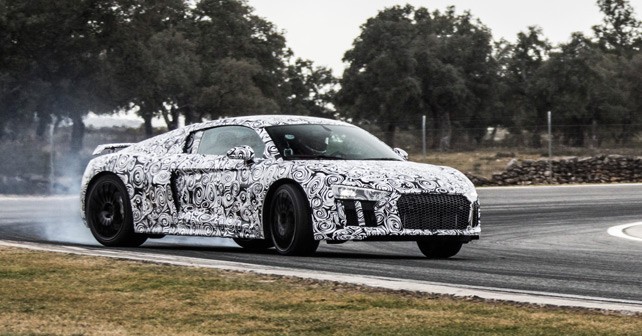
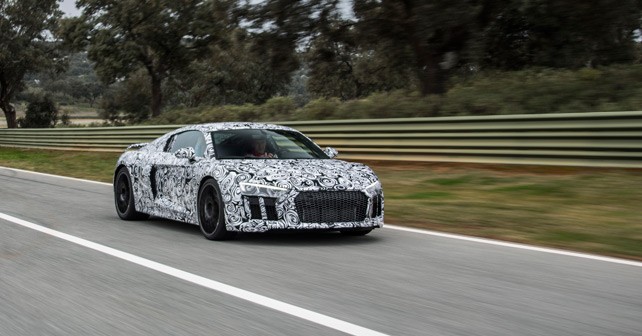





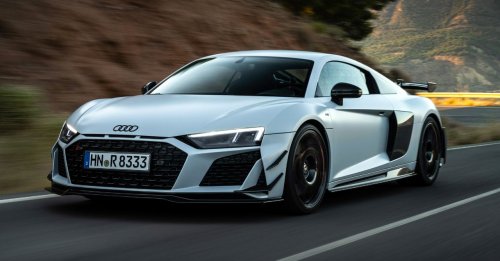
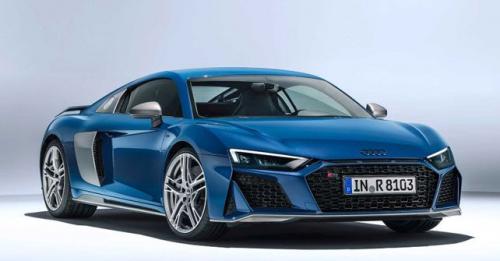
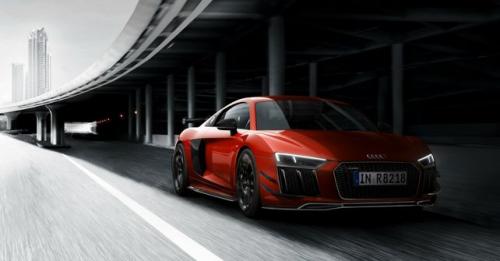
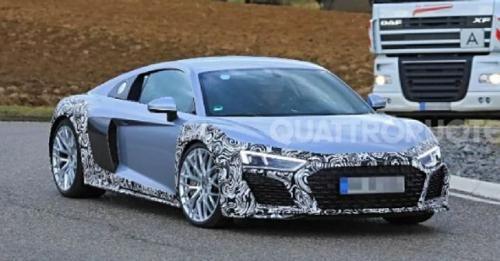
















Write your Comment